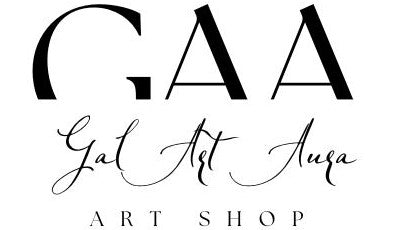The Art Timeline: A Journey Through the Ages of Creativity
Art is a reflection of the human soul and its evolution through the ages. The art chronology allows us to go back in time and understand the different artistic periods that have marked our history. From primitive art to contemporary movements, this artistic journey is both captivating and inspiring.
Introduction
Art, in all its forms, has played an essential role in the expression of human creativity and culture. This art timeline takes us on a fascinating journey through the eras, highlighting key moments in artistic history.
Primitive Art
The history of art begins with primitive art. Early human artists left their mark in caves and rock shelters, creating rock art that speaks to their worldview.
Art of Antiquity
Greek civilizations
The ancient Greeks gave birth to idealized sculptures and mosaics that shaped the vision of beauty and artistic perfection.
Roman Empire
Roman art inherited this tradition, creating mosaics, frescoes and monumental architecture that attest to the greatness of this empire.
Medieval Art
Byzantine art
Byzantine art focused on religious mosaics and icons, reflecting the spirituality of the time.
Romanesque art
Romanesque art brought ornamental wall paintings and sculptures to medieval churches and cathedrals.
Gothic art
Gothic art was characterized by its majestic cathedrals, colorful stained glass windows, and detailed Gothic sculpture.
The Renaissance (14th - 17th centuries)
Italian Renaissance
The Italian Renaissance saw the flourishing of painters such as Leonardo da Vinci, Michelangelo and Raphael, who redefined art.
Flemish Renaissance
The Flemish Renaissance, with artists like Jan van Eyck, introduced new painting techniques.
German Renaissance
In Germany, Albrecht Dürer left his mark with his woodcuts and iconic works.
The Baroque Era (17th - 18th centuries)
Italian Baroque
Italian Baroque saw masters like Caravaggio and Gian Lorenzo Bernini create emotional and dramatic works.
Spanish Baroque
In Spain, Diego Velázquez brought his own realistic and detailed style to Baroque art.
Flemish Baroque
The Flemish Baroque was marked by Peter Paul Rubens and his opulent paintings.
Neoclassicism (late 18th century)
Neoclassicism took art back to antiquity, with artists like Jacques-Louis David and Jean-Auguste-Dominique Ingres.
Romanticism (early 19th century)
French romanticism
French romanticism saw artists like Eugène Delacroix and Théodore Géricault explore passionate themes.
English romanticism
In England, painters like JMW Turner and William Blake captured the beauty of nature and imagination.
German romanticism
German romanticism, represented by Caspar David Friedrich, expressed emotion and spirituality.
Realism (mid-19th century)
Realism, embodied by artists such as Gustave Courbet and Honoré Daumier, showed everyday life in a raw and honest way.
Modern Art (late 19th - mid 20th century)
Modern art, which precedes contemporary art, was a period marked by bold artistic experimentation, including movements like Fauvism, Cubism, and Surrealism.
Impressionism (late 19th century)
Impressionism revolutionized art with artists like Claude Monet, Edgar Degas and Pierre-Auguste Renoir, who captured light and immediacy.
Post-Impressionism (late 19th - early 20th century)
Artists such as Vincent van Gogh, Paul Cézanne and Paul Gauguin pushed Impressionism in new directions.
Fauvism (early 20th century)
Fauvism, represented by Henri Matisse and André Derain, used bright colors to express strong emotions.
Cubism (early 20th century)
Analytical Cubism
Pablo Picasso and Georges Braque deconstructed reality into geometric shapes.
Synthetic Cubism
Juan Gris explored synthetic cubism using collage and patterns.
Surrealism (early 20th century)
Surrealism opened the doors to the unconscious with Salvador Dalí, René Magritte and Max Ernst.
Abstraction (early 20th century)
Geometric abstraction
Piet Mondrian and Kazimir Malevich created works of geometric abstraction, playing with lines and colors.
Lyrical abstraction
Wassily Kandinsky and Joan Miró explored lyrical abstraction, expressing emotion through art.
Pop Art (mid-20th century)
Pop art, with artists like Andy Warhol and Roy Lichtenstein, celebrated popular culture.
Conceptual Art (1960s)
Marcel Duchamp and Joseph Kosuth challenged the notion of art with conceptual ideas.
Minimalism (1960s)
Minimalism, represented by Donald Judd and Dan Flavin, used simplicity to create an artistic experience.
Contemporary Art (from the second half of the 20th century to the present day)
Contemporary art is diverse, including installation, performance, digital art and more, reflecting the plurality of modern artistic expression.
Conclusion
The Art Timeline shows us how art has evolved in response to times, cultures and ideas. It is a testament to human imagination and its ability to create and innovate.
To learn more about the Timeline of Art: https://en.wikipedia.org/wiki/Timeline_of_art
FAQs
Which artistic movement introduced innovative painting techniques during the Flemish Renaissance?
The Flemish Renaissance, with artists like Jan van Eyck, introduced new painting techniques.
Who are some of the major artists of modern art?
Modern art, which precedes contemporary art, has seen major artists such as Pablo Picasso, Henri Matisse and Salvador Dalí.
How is contemporary art distinguished from modern art?
Contemporary art encompasses a diversity of artistic approaches, including installation, performance, digital art and more, reflecting the plurality of modern artistic expression. Modern art, on the other hand, is primarily associated with the art movements of the 19th and early 20th centuries.














